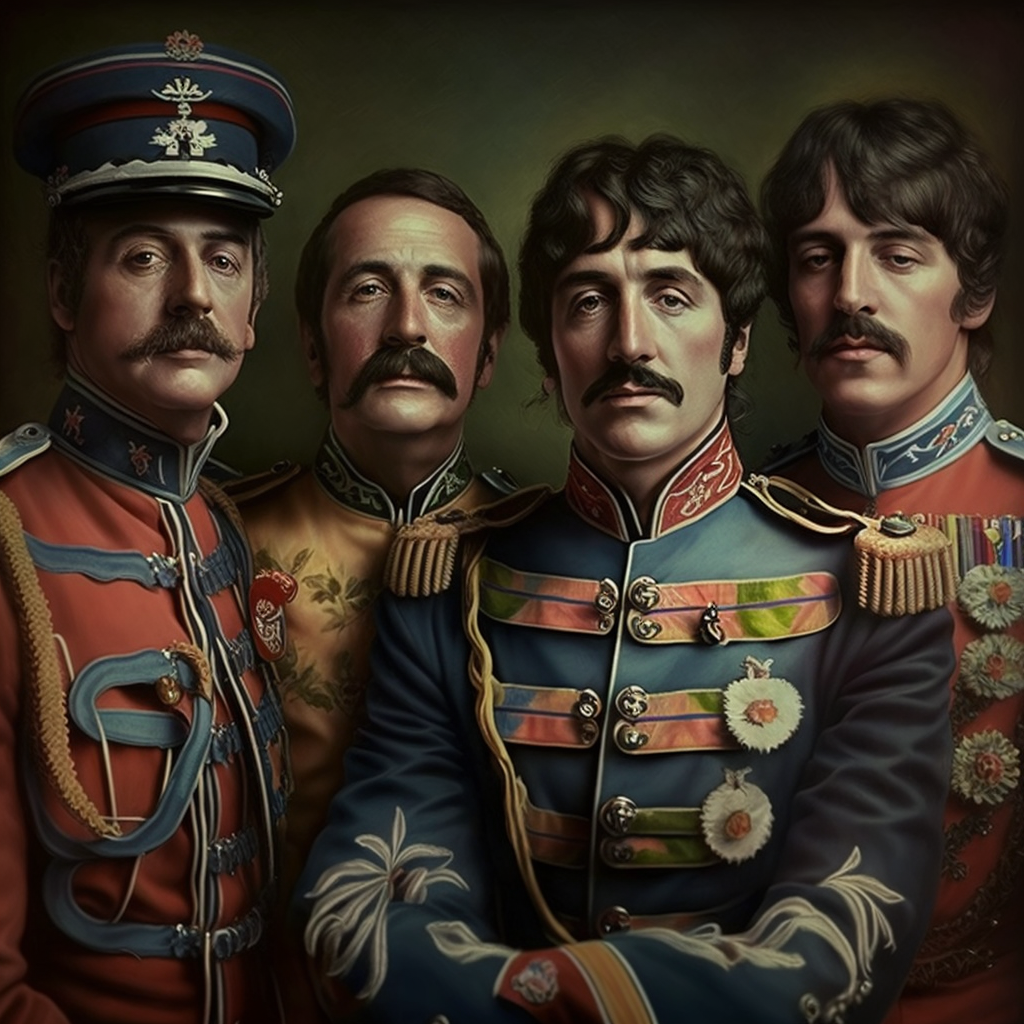
 The Beatles Discography: A Journey Through Their Iconic Music
The Beatles Discography: A Journey Through Their Iconic Music
The Beatles Discography: A Journey Through Timeless Music
The Beatles are one of the most iconic bands in the history of music. With their innovative songwriting, catchy melodies, and charismatic personalities, the Fab Four revolutionized popular music and inspired countless musicians in the decades since their breakup. From their early days in Liverpool to their final recording sessions at Abbey Road, the Beatles’ discography spans a wide range of musical styles and genres, each album showcasing their evolution as artists and their impact on the world of music.
In this article, we’ll take a deep dive into the Beatles’ discography, exploring each of their studio albums and the unique qualities that make each one special. Whether you’re a lifelong fan or new to the band’s music, we hope to provide a comprehensive guide that showcases the Beatles’ artistry and enduring influence on music and culture. So sit back, grab your headphones, and join us on a journey through the Beatles’ musical legacy.
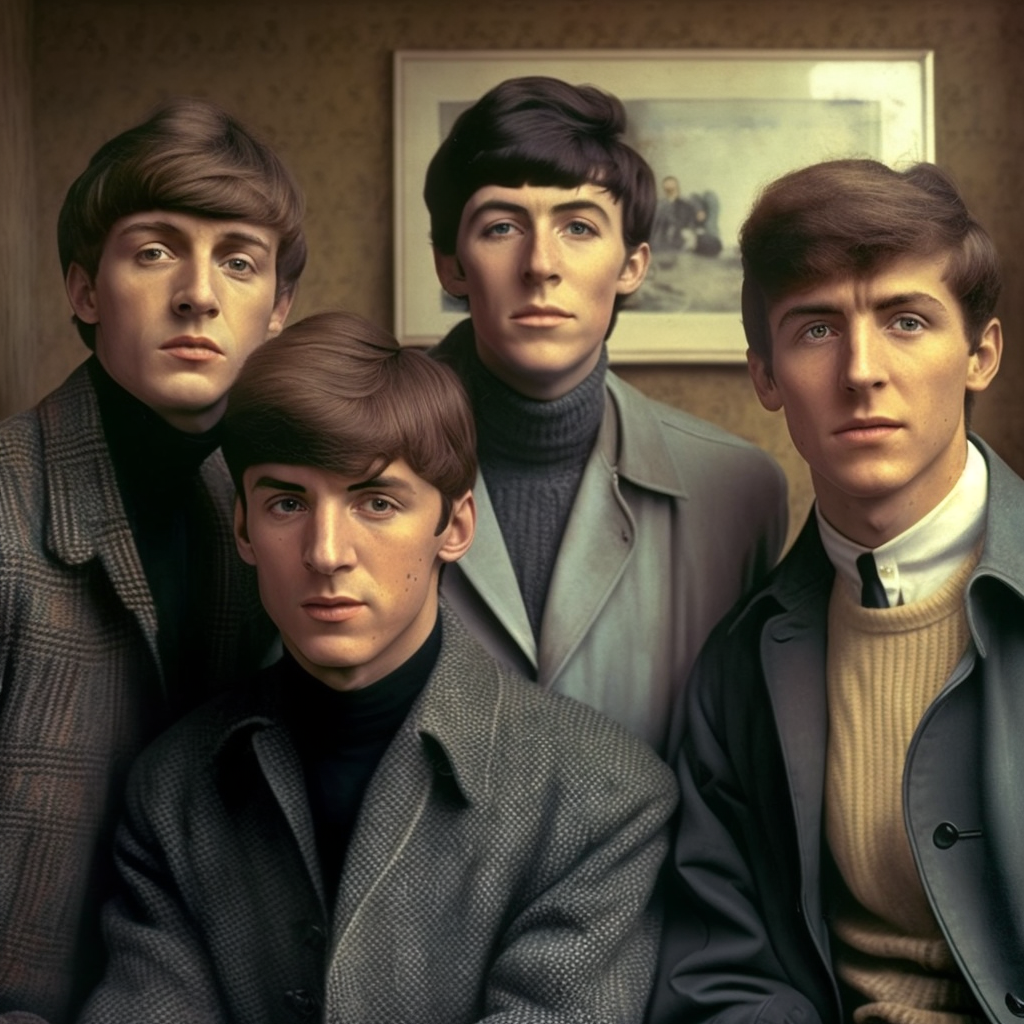
Part 1: Introduction and Early Years
The Beatles are one of the most influential and celebrated bands in the history of music. Formed in Liverpool in 1960, the band consisted of John Lennon, Paul McCartney, George Harrison, and Ringo Starr. Over the course of their career, The Beatles released thirteen studio albums, twelve extended plays, and twenty-two singles. Their discography is a testament to their evolution as artists and their impact on the music industry.
The Beatles began their journey as a skiffle group in Liverpool, performing covers of songs by American artists such as Chuck Berry and Little Richard. In 1962, they released their debut album, Please Please Me, which included hits like “Love Me Do” and “Twist and Shout.” The album showcased the band’s raw energy and harmonies, and it marked the beginning of their meteoric rise to fame.
Their follow-up album, With the Beatles, continued in the same vein, with the band delivering covers of R&B classics and original compositions that reflected their growing songwriting abilities. By the time their third album, A Hard Day’s Night, was released in 1964, The Beatles had become a cultural phenomenon. The album served as the soundtrack to their first film of the same name, and it included hits like “Can’t Buy Me Love” and “A Hard Day’s Night.”
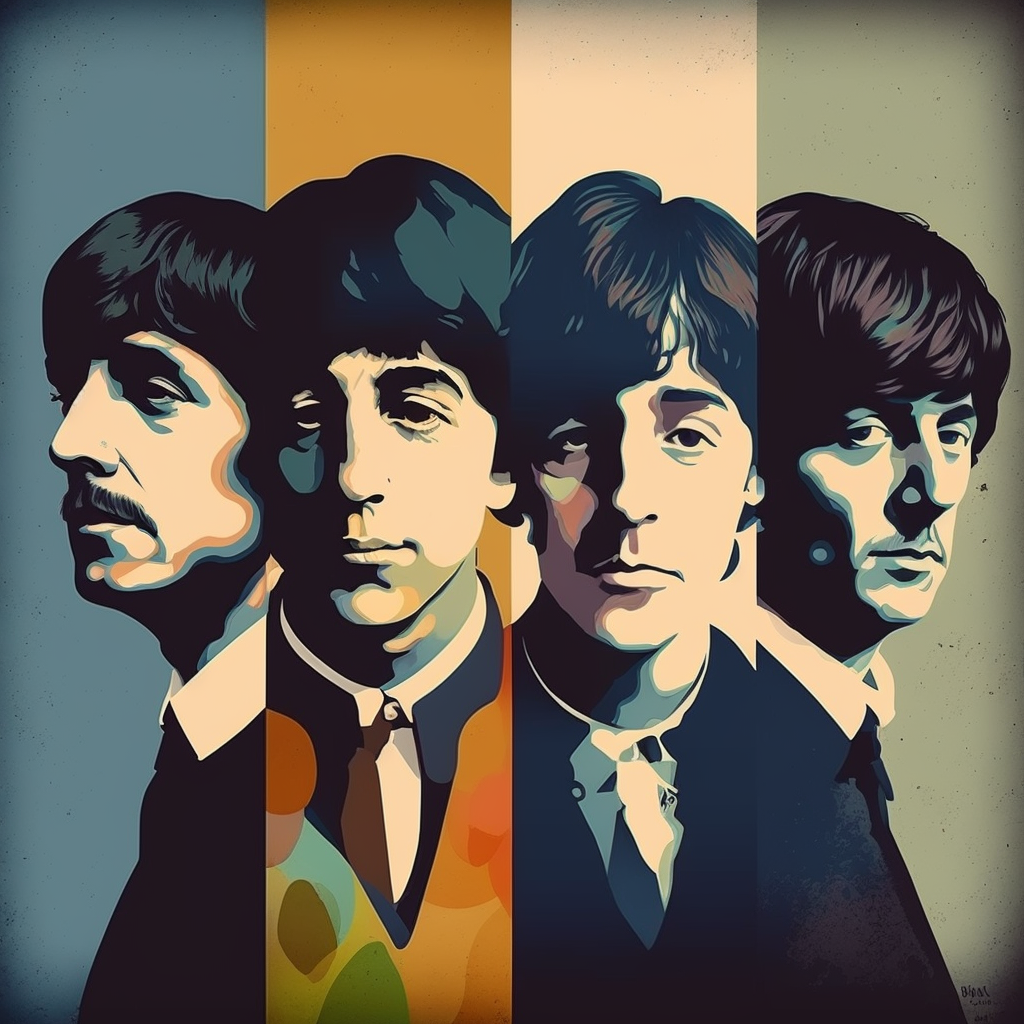
Part 2: Experimentalism and Evolution
As The Beatles’ career progressed, they began to experiment with their sound and push the boundaries of what was expected of a rock band. This can be seen in their fifth album, Rubber Soul, which marked a departure from their earlier, more straightforward rock ‘n’ roll sound. The album featured a range of different genres, including folk, soul, and psychedelic rock. It included classics like “Norwegian Wood” and “In My Life,” which showcased the band’s growth as songwriters.
Their next album, Revolver, was even more experimental, with the band incorporating elements of Indian music, avant-garde sounds, and studio techniques that had never been used before in popular music. The album included hits like “Taxman” and “Eleanor Rigby,” which further cemented The Beatles’ status as musical innovators.
In 1967, The Beatles released their masterpiece, Sgt. Pepper’s Lonely Hearts Club Band. The album is widely regarded as one of the greatest albums of all time, and it solidified The Beatles’ status as musical geniuses. The album featured a range of different styles and genres, including rock, pop, psychedelic, and Indian music. It included classics like “Lucy in the Sky with Diamonds” and “A Day in the Life,” which showcased the band’s ability to blend different elements together seamlessly.

Part 3: The End of an Era
The Beatles’ final years were marked by tensions within the band, which eventually led to their breakup in 1970. Despite this, they managed to release some of their greatest work during this time. In 1968, they released their self-titled album, also known as the “White Album.” The album was a departure from their previous work, with the band exploring a range of different styles and genres. It included hits like “Back in the USSR” and “While My Guitar Gently Weeps,” which showcased the band’s ability to create classic rock songs.
Their final studio album, Let It Be, was released in 1970. The album featured a more stripped-down sound compared to their previous albums, and it included hits like “Get Back” and “Let It Be.” The album was recorded during a tumultuous time for the band, and it marked the end of an era for music.

Part 1: The Early Years (1962-1964)
The Beatles’ discography spans over a decade and includes some of the most influential and beloved music of all time. In this article, we will explore each era of their music and highlight some of their most iconic albums and songs.
The Beatles first formed in 1960 in Liverpool, England, and consisted of John Lennon, Paul McCartney, George Harrison, and Ringo Starr. They started out playing in local clubs and bars, honing their sound and developing their style. By 1962, they had signed with Parlophone Records and released their debut album, “Please Please Me.”
“Please Please Me” is a raw and energetic album that captures the essence of The Beatles’ early sound. It features hits like “Love Me Do” and “Twist and Shout” and establishes the band’s reputation as a group that could deliver catchy melodies and irresistible hooks. The album’s title track, “Please Please Me,” became their first number one hit in the UK, and it’s easy to see why. The song is bursting with youthful energy and features John Lennon’s signature harmonica riff.
The success of “Please Please Me” set the stage for what would become known as “Beatlemania.” The Beatles’ next few albums, “With The Beatles” (1963) and “A Hard Day’s Night” (1964), continued to solidify their reputation as a force to be reckoned with in the music industry. “With The Beatles” features classics like “All My Loving” and “Money (That’s What I Want),” while “A Hard Day’s Night” showcases the band’s growth as songwriters and musicians. The title track, “A Hard Day’s Night,” is a masterpiece of pop songwriting, featuring intricate harmonies, catchy guitar riffs, and clever lyrics.
It’s important to note that during this time, The Beatles were not just a band; they were a cultural phenomenon. Their music, style, and attitudes inspired an entire generation of young people, and their influence can still be felt today. The Beatles were more than just musicians; they were icons.
In addition to their studio albums, The Beatles also released a number of hit singles during this time. Songs like “She Loves You,” “I Want To Hold Your Hand,” and “Can’t Buy Me Love” became instant classics and helped cement The Beatles’ place in music history.
The Beatles’ early years were marked by their infectious energy, their catchy melodies, and their undeniable charisma. They were a band that seemed to come out of nowhere and take the world by storm. But their success was no accident; it was the result of years of hard work, dedication, and a love for music that was evident in every note they played.
The Beatles’ early years were a time of rapid growth and incredible success. They burst onto the music scene with a sound that was fresh and exciting, and they quickly became one of the most popular and influential bands of all time. Their early albums and hit singles still resonate with audiences today, and they continue to inspire new generations of musicians and music lovers alike. The Beatles’ impact on music and popular culture cannot be overstated, and their legacy will continue to live on for generations to come.
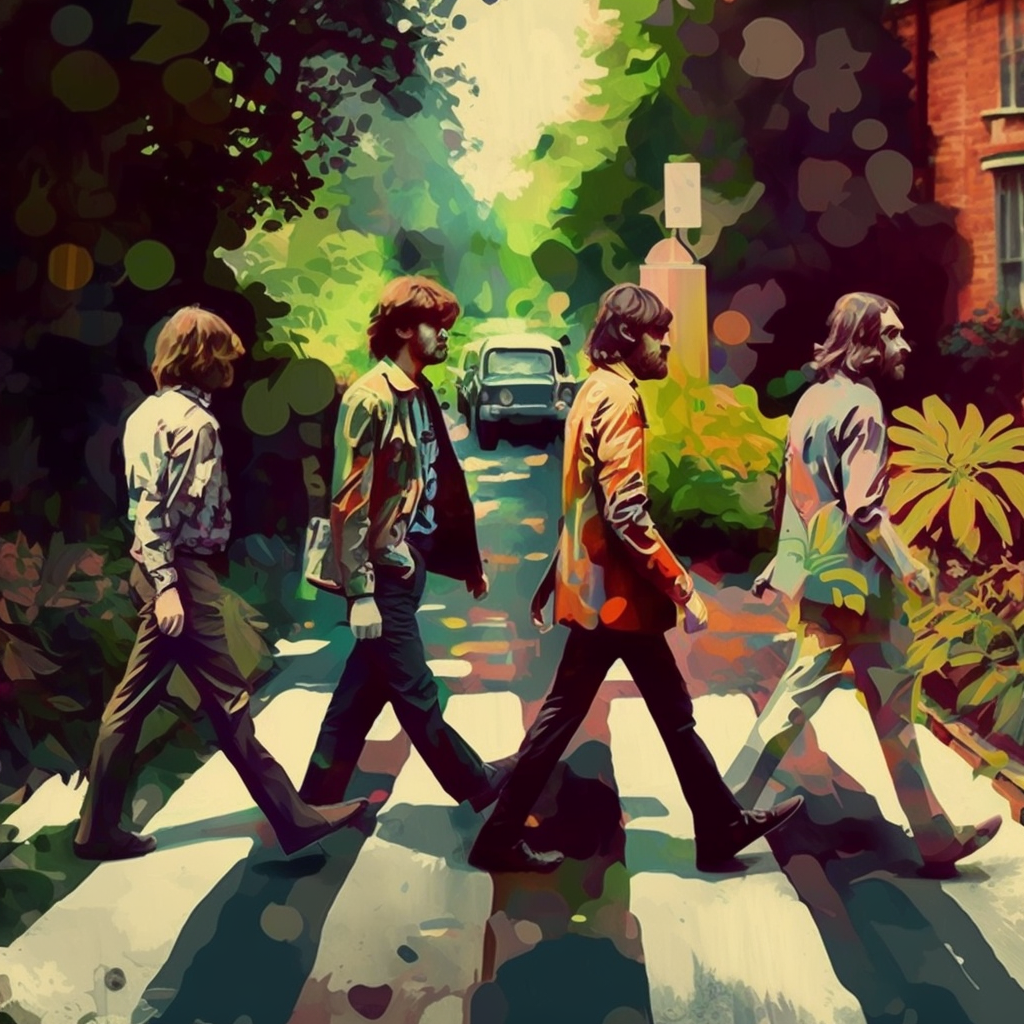
Part 2: The Middle Years (1965-1968)
The Beatles’ middle years marked a significant shift in their music, as they began experimenting with new sounds and styles. These years saw the band reach new heights of success and popularity, but also marked the beginning of their eventual breakup.
Rubber Soul (1965)
Released in December 1965, Rubber Soul represented a significant departure from the Beatles’ previous albums. The album showcased the band’s growing experimentation with different genres and sounds, incorporating elements of folk, rock, and even Indian classical music. Songs like “Drive My Car” and “Norwegian Wood (This Bird Has Flown)” displayed the Beatles’ newfound interest in the folk-rock sound, while “Michelle” and “Girl” showcased the band’s use of acoustic guitars and intricate vocal harmonies.
Rubber Soul also marked a turning point in the Beatles’ songwriting, as they began to tackle more introspective and personal themes in their lyrics. Songs like “In My Life” and “Nowhere Man” were deeply reflective and emotional, while “The Word” and “Think for Yourself” encouraged listeners to think critically about the world around them.
Revolver (1966)
Released in August 1966, Revolver is widely regarded as one of the Beatles’ greatest achievements. The album showcased the band’s continued experimentation with new sounds and studio techniques, incorporating elements of psychedelia and Indian classical music.
Songs like “Taxman” and “Eleanor Rigby” showcased the Beatles’ sharp wit and storytelling abilities, while “Tomorrow Never Knows” represented a significant departure from their previous work, with its use of electronic and experimental production techniques.
Revolver marked a significant turning point in the Beatles’ career, as it showcased their growing interest in exploring new musical and creative territories.
Sgt. Pepper’s Lonely Hearts Club Band (1967)
Released in June 1967, Sgt. Pepper’s Lonely Hearts Club Band is widely regarded as one of the most groundbreaking albums in the history of popular music. The album represented a radical departure from the Beatles’ earlier work, incorporating elements of orchestral music, psychedelia, and avant-garde experimentalism.
Songs like “Lucy in the Sky with Diamonds” and “A Day in the Life” showcased the Beatles’ interest in psychedelic and surrealist imagery, while “With a Little Help from My Friends” and “Getting Better” represented a continuation of their earlier, more straightforward pop sound.
Sgt. Pepper’s also marked a significant shift in the Beatles’ public image, as they began to embrace the concept of the “album” as a form of artistic expression. The album’s iconic cover art and innovative packaging helped to cement its place in the cultural zeitgeist, and its impact on popular music continues to be felt to this day.
The White Album (1968)
Released in November 1968, The White Album represented a significant departure from the Beatles’ previous work. The album was characterized by its eclectic mix of styles and sounds, ranging from acoustic ballads like “Blackbird” to avant-garde experiments like “Revolution 9”.
The White Album was also notable for the tension and conflict that arose during its recording, as the Beatles struggled to reconcile their divergent creative visions. Despite this, the album showcased the band’s continued willingness to experiment with new sounds and ideas, and its impact on popular music continues to be felt to this day.
The Beatles’ middle years represented a period of significant experimentation and innovation in their music. With albums like Rubber Soul, Revolver, Sgt. Pepper’s Lonely Hearts Club Band, and The White Album, the band pushed the boundaries of what was possible in popular music, incorporating elements of folk, rock, psychedelia, and avant-garde experimentalism.
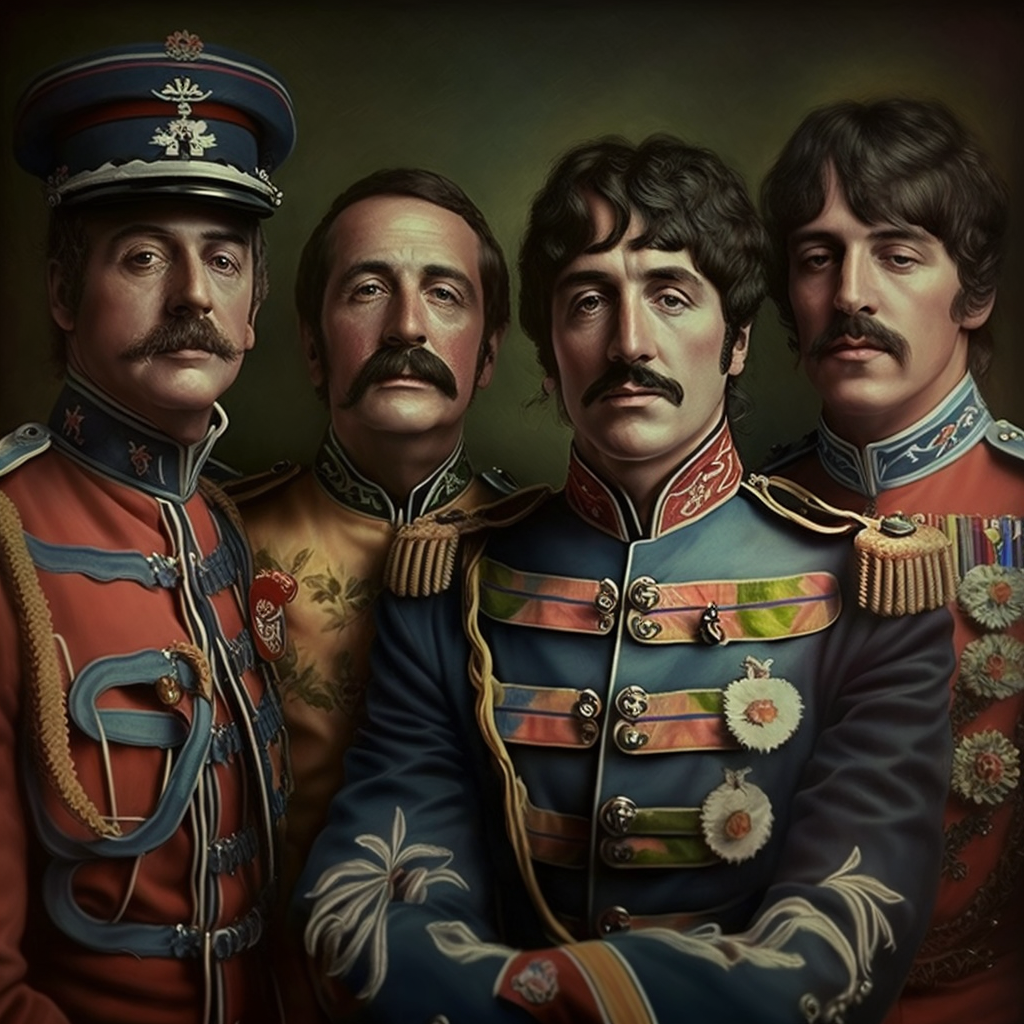
Part 3: Later Days Of The Beatles
In part 3, we’ll be covering The Beatles’ final albums and their impact on music history.
The Beatles’ later years, particularly from 1967 to 1970, saw the band experiment with new sounds and styles. The influence of Indian music, psychedelia, and progressive rock became more prominent in their music, resulting in some of the band’s most iconic and experimental works.
One of the band’s most celebrated albums from this period is Sgt. Pepper’s Lonely Hearts Club Band, released in 1967. Widely regarded as one of the greatest albums in music history, it marked a major turning point for the band and for rock music as a whole. The album’s concept of a fictional band and its incorporation of diverse musical genres, experimental production techniques, and surreal imagery made it a landmark in the history of popular music.
The album opens with the title track, which introduces the concept of the fictitious Sgt. Pepper’s Lonely Hearts Club Band. The album then moves through a variety of musical styles, from the nostalgic “When I’m Sixty-Four” to the psychedelic “Lucy in the Sky with Diamonds” to the haunting “A Day in the Life,” which features a famous orchestral climax.
Another iconic album from this period is The Beatles (also known as The White Album), released in 1968. The album is a diverse collection of songs, ranging from the introspective “Julia” to the rock and roll of “Back in the USSR” to the avant-garde sound collage of “Revolution 9.” The album’s lack of a clear concept or theme is part of its appeal, allowing listeners to interpret it in their own way.
The Beatles’ final album, Let It Be, was released in 1970. While it was recorded before the release of Abbey Road, it was released after the band had officially broken up. The album has a more stripped-down sound than some of the band’s previous work, with a focus on live performances and a raw energy. The title track, “Let It Be,” is a stirring anthem of hope and resilience, while “Get Back” is a lively rock and roll track.
In addition to these albums, The Beatles also released several singles and non-album tracks during this period, including “Hey Jude,” “Revolution,” and “Don’t Let Me Down.” These songs further showcased the band’s versatility and innovation, with “Hey Jude” in particular becoming one of the best-known and most beloved songs in popular music history.
While The Beatles’ later years saw them move away from their early rock and roll sound, their experimentation and innovation during this period cemented their place as one of the most influential and important bands in music history. Their ability to evolve and adapt to new styles and sounds while retaining their distinctive sound and identity is a testament to their artistry and creativity.
The Beatles’ discography is a testament to their creativity, innovation, and enduring legacy in popular music. From their early rock and roll roots to their experimentation with new sounds and styles, their music continues to inspire and influence generations of musicians and music fans. Whether you’re a lifelong fan or a newcomer to their music, there’s something for everyone in The Beatles’ timeless discography.
Categorised in: Psychedelic



